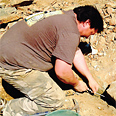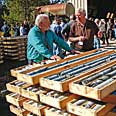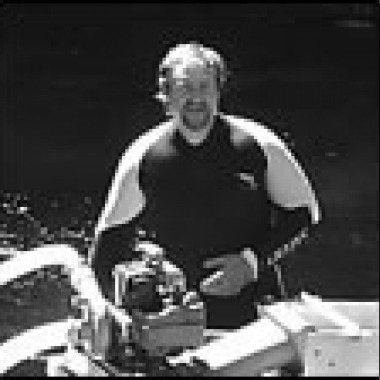All Articles
Update on Oregon, Idaho and California Suction Dredge Permits
June 2010 by Chris Ralph
Oregon. As expected, the State of Oregon has proposed a new general National Pollutant Discharge Elimination System (NPDES) permit that is considerably more restrictive than the one that is currently in effect. It would require that even operators using a simple hand sluice in a stream obtain and hold an annual permit. The proposed regulations would no longer allow dredges over 4 inches or dredges with motors greater than 16 HP to operate under a standard permit. A five-inch dredge or a dredge equipped with a motor greater than 16 HP would require a special commercial permit that would cost approximately $11,000 per year. In reality, this is a functional prohibition of all dredges greater than 4 inches, as no small-scale prospector would go through the hassle or pay the exorbitant fee to obtain the larger permit.The current permit requires that dredge operators with an intake greater than 4 inches monitor the turbidity of the stream below their operation and that no visible increase in turbidity be noticeable 300 feet downstream. The proposed permit requires this turbidity monitoring from all operators, including dredges smaller than 4 inches and hand sluice operators. Failure to comply with the turbidity requirements would result in a substantial fine. The Oregon Department of Environmental Quality (DEQ) is also including anticipated changes that might be required by a court even though the requirements have not actually been set. (The current permit was subjected to a lawsuit by both the Eastern Oregon Miners Association and the Northwest Environmental Defense Center, though for different reasons.)
New “best management” requirements are also proposed for the new permit, preventing multiple dredges being used in the same general stretch of the stream, restricting dredging in areas of drinking water intakes, and preventing the invasion of undesirable species that can be carried on equipment.
The inclusion of the requirement for a permit for hand sluice operation is being pitched by the Oregon DEQ as a money saving bonus, not a new tax or requirement, for Oregon prospectors. The suggestion by DEQ is that a $25 permit is better than the cost of a standard $11,000 NPDES permit. Oregon prospectors are unlikely to see it that way. Oregon miners see this proposed permit as a substantial loss of their right to prospect in the waters of the state and are mobilizing to deal with the problems presented by this proposal.
The DEQ is also proposing to prohibit the use of winches to move large boulders, which would obviously create a safety hazard as miners try to excavate underneath them instead, and proposing that dredgers be required to “decontaminate” their dredge prior to putting it in the water.
The permit is being rushed through on a fast track schedule, which is limiting the opportunity for miners to comment and examine the supposed science upon which an NPDES permit is being proposed for tiny operations that are considered insignificant in other states. At a recent meeting in Portland, the Oregon DEQ took comments on the proposed permit, but was not prepared to present the actual science used to support the additional restrictions, nor were they prepared to answer any specific questions from prospectors in the audience.
Several public meetings were scheduled on short notice, which did not allow us sufficient time to notify our subscribers, but we did send out an email notification to our readers who have signed up for our online newsletter. The meetings were scheduled for May 27, June 1 and June 3, and comments on the proposed rule are due by June 8.
Written comments may be sent to:
Beth Moore
DEQ Water Quality
811 SW Sixth Ave
Portland, OR 97204-1390
Comments may also be emailed to 700PM@deq.state.or.us or faxed to (503)229-6037.
Idaho. After considering the dredging situation in Idaho, the Idaho Department of Water Resources is not going to use the NPDES Dredge Permit for 2010 since it was causing too many problems, and there was no budget to enforce or manage it. A permit is still required for dredging, but it is being issued under Idaho State laws regarding stream channel alteration, and not the more restrictive federal NPDES limitations. The permit letter requires common sense precautions to prevent damage to fish spawning areas and is easily obtained from the state.
The cost of the permit will be $10 for Idaho residents and $30 for out-of-state operators. Dredges with nozzle sizes in excess of five inches (5”), or rated at greater than 15 HP, or any equipment capable of moving or processing more than two (2) cubic yards per hour are not covered under this permit. Unlike Oregon, Idaho is not establishing any special requirements for small-scale, non-powered hand sluicing operations. The Idaho permitting process requires that the dredge operator be familiar with potential fish impacts as well the spread of invasive and undesirable freshwater clam species. To minimize fish spawn impacts, the Idaho regulations also specify certain streams where small-scale mining is allowed or prohibited.
California. There’s not a whole lot of news to report. The dredging ban remains in place as appeals wind their way through state and federal courts.
A bill to require the State of California to refund dredge permit fees for 2009 passed out of committee and is awaiting a vote by the full legislature.
Swiss Mining Company Demands Compensation From Bolivia
Glencore International AG demanded compensation from Bolivia’s government for nationalizing a tin smelter owned by the Swiss mining company.
Ask the Experts
What to do with black sands
Our Readers Say
 I really learned a lot from your step-by-step presentation and our "hands-on" observation of all the steps involved in mining...
I really learned a lot from your step-by-step presentation and our "hands-on" observation of all the steps involved in mining...
The Bawl Mill
• It’s time for a change
• No such thing as a free lunch
• Cold weather interrupts global warming expedition
Revisiting Commerce Resources—A Tantalum and Niobium Mining Project
 One of the most intriguing company articles we have written during the past few years was based on our late Spring 2005 visit to Commerce Resources’ tantalum and niobium project in the towering mountains of east-central British Columbia...
One of the most intriguing company articles we have written during the past few years was based on our late Spring 2005 visit to Commerce Resources’ tantalum and niobium project in the towering mountains of east-central British Columbia...
Melman on Gold & Silver
…one thing is certain for the precious metals—these events reflect growing instability—and growing instability has historically been positive for the prices of gold and silver.
5th Circuit Ruling May Benefit Miners
This ruling comes at an opportune time, just as suction dredge miners are dealing with new proposed regulations in several western states. Be sure to cite this case when you provide comments on the regulations!
Subscription Required:
The Bawl Mill
• Legislative and Regulatory Update
• Sluicing at Rocky Bar, Idaho
• Nine Pound Nugget Found In Northern California!
• How Much Gold Is In My Gold-Quartz Specimen?
• Glaciers and Placer Gold Deposits
• Ask The Experts: Can you help me identify these items?
• Getting The Most Value From Your Gold-Quartz Specimens
• Highbanking and the House Rock
• Fix or Replace, Depreciate or Write-Off
• Melman on Gold & Silver
• Mining Stock Quotes & Mineral and Metal Prices








